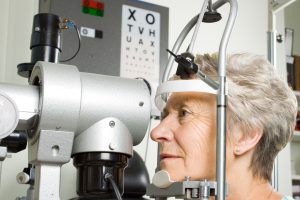How Is AMD Treated?
 Although there is no known cure for Age-Related Macular Degeneration (AMD), there are many treatment approaches Dr. Michael Sumsion can use to slow the progression of this serious condition. When left untreated, AMD most likely leads to blindness. For this reason, it is imperative that patients who begin to experience symptoms of macular degeneration seek out the assistance of a board-certified ophthalmologist immediately to improve chances of vision preservation.
Although there is no known cure for Age-Related Macular Degeneration (AMD), there are many treatment approaches Dr. Michael Sumsion can use to slow the progression of this serious condition. When left untreated, AMD most likely leads to blindness. For this reason, it is imperative that patients who begin to experience symptoms of macular degeneration seek out the assistance of a board-certified ophthalmologist immediately to improve chances of vision preservation.
The treatment used for AMD will depend in part upon which type of macular degeneration the patient is diagnosed with. For dry macular degeneration, vision aids and vitamin therapy are often used to minimize the symptoms. Protecting the eyes from UV exposure and receiving routine eye exams are also important components of managing dry macular degeneration.
Patients diagnosed with wet macular degeneration have a number of treatment options available, and Dr. Sumsion can help determine which course of action can best suit your needs during the consultation process. Intravitreal injections with Lucentis®, Avastin®, or Eylea® can potentially stop fluid leakage within the retina and ideally prevent further damage. In some cases, Photodynamic Therapy (PDT) can be used to target leaking vessels in the eye and slow the progression of macular degeneration.
The most important step toward successful treatment of AMD is receiving a proper diagnosis. Scheduling routine eye exams can help ensure your eye doctor catches macular degeneration in its earliest stages. Prompt diagnosis can lead to swift treatment, which may provide the best opportunity for preserving your vision.